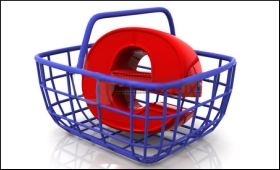|

|
C2C e-commerce bridging gap, paving the way for SMEs
|
|

|
|
| Top Stories |
 |
|
|
|
Porisma P. Gogoi | 11 Sep, 2017
Aiming to ease hurdles faced by small sellers to showcase products online, many e-commerce platforms are offering incentives to bridge the gap by removing intermediaries and delivering products from the small and medium enterprises (SMEs) to consumers.
The country's customer-to-customer (C2C) market, which is sized at around USD 5 billion annually, has been largely facilitated by these e-commerce platforms by helping smaller merchants sell from their own websites or by allowing them the facility to sell through other bigger platforms like Amazon and eBay.
"With the introduction of Digital India, current scenario of C2C business in India is quite promising. It is booming," Priyank Varshney, founder of online handicraft's store Handikart, told news agency.
"The C2C e-commerce, which is still at a very nascent stage, is evolving and a growing number of start-ups are trying to make their mark by providing a technological platform to the resellers with an intention to organise the space," he added.
As an online e-commerce platform, Handikart directly procures handcrafted items and products from artisans with instant payment and trades those items online on the website and through online portals like Amazon or eBay.
According to research and consultancy firm Zinnov, the C2C e-commerce market in India is currently pegged at around USD 9 billion and expected to record a compounded annual growth rate of 60-70 percent by 2022.
"The Indian SME market is hungry and ambitious to embrace digital but is waiting for someone to take the lead and show the way. While everybody wants to take their business online, they still need a lot of handholding to address their latent barriers... For exactly these reasons, we decided to make our product really easy for them to use," said Anurag Avula, Chief Executive Officer and Co-founder of international e-commerce company Shopmatic.
Avula said the last quoted size of the market is around 51 million SMEs.
The company helps owners by developing a unique web store to list businesses on marketplaces and social media channels, also giving insights on how to sell online.
"Our entire platform is designed such that people can take pride in building their e-commerce stores with their own hands -- just like they build their own businesses," Avula added.
E-commerce platform Kraftly's "MySite" is another platform where small-scale sellers can design and integrate a free dedicated website to run their own complete feature-rich website and increase visibility and discoverability for their brand.
"The whole idea behind this is creating a bridge for small sellers to come online. Sellers might be able to market their products very well on the social media, but when it comes to getting orders, we (at Kraftly) have a lot of expertise in being able to optimise digital marketing spend. So, we are able to get orders at much cheaper cost than the sellers are able to do themselves," said Akshay Ghulati, Chief Business Officer, Kraftly.
Ghulati expressed bullish sentiments on the e-commerce sector, saying: "I think this is right time for the MSME sector to flourish in India. I think GST is going to be a massive boost because cross-state and cross-city selling will become much easier."
E-commerce has a very important role to play, specially with the SMEs, because large companies have always been able to tackle challenges with people and resources.
"The small sellers traditionally have hesitated and focussed only on the local economy or within states. With e-commerce companies offering logistics and payment solutions, I think in the next two-three years, we will definitely see a lot of growth for online commerce in India," added Ghulati.
|
|
|
| |
|
|
|
|
|
|
|
C2C ecommerce
KKRAO | Wed Sep 13 12:12:07 2017
The e-commerce to flourish in India no buyer will blindly order products. In spite of detailed specifications also SME will supply un matched product. which causes both the customer and manufacturer loss of time and money. For this, a good display of product on the web is required. or to be the best a group of SME should have a centralised distributor solely working to the benefit of a customer, who can guarantee the product to the consumer.

|
|
|
|
|
|
|
| |
| Customs Exchange Rates |
| Currency |
Import |
Export |
US Dollar
|
â¹91.25
|
â¹89.55 |
UK Pound
|
â¹122.85
|
â¹118.85 |
Euro
|
â¹107.95
|
â¹104.3 |
| Japanese
Yen |
â¹59 |
â¹57.1 |
| As on 29 Dec, 2025 |
|
|
| Daily Poll |
 |
 |
| What is your biggest hurdle to scaling right now? |
|
|
|
|
|
| Commented Stories |
 |
|
|
|
|
|
| |
|